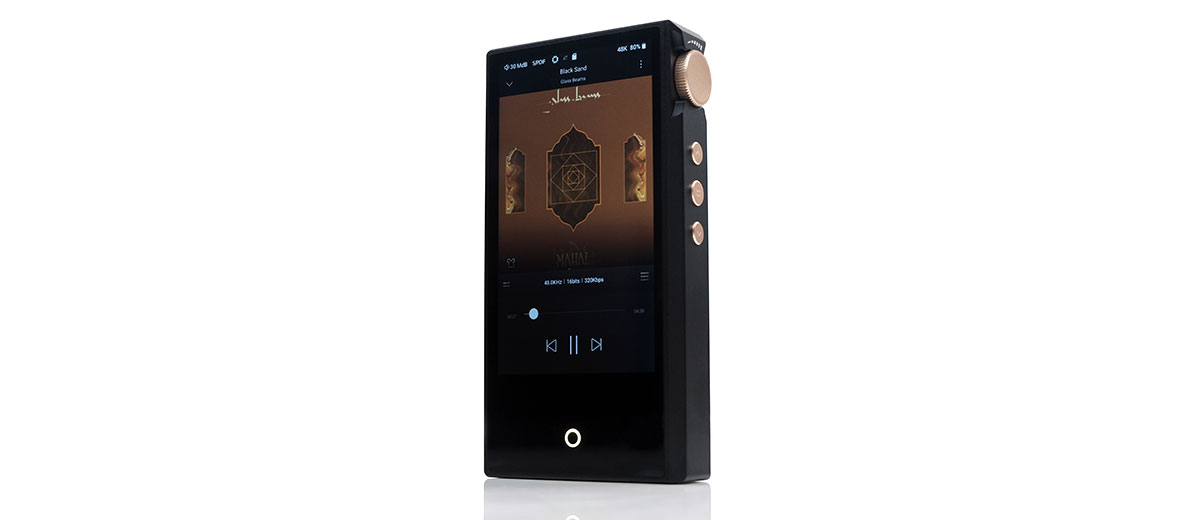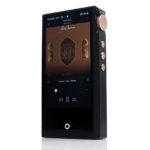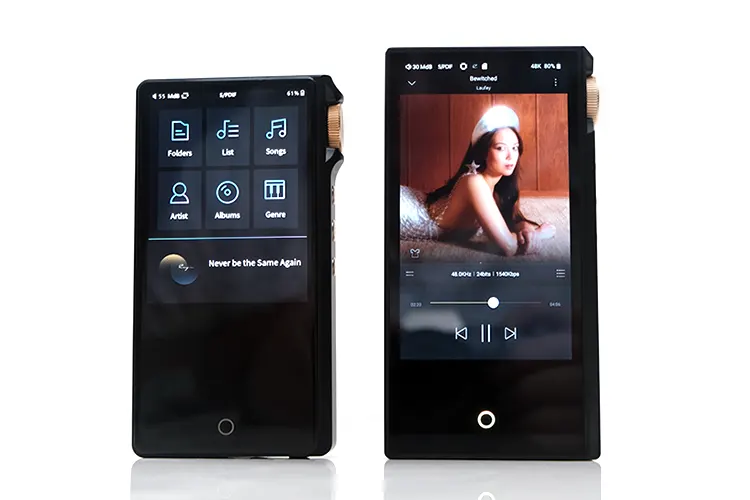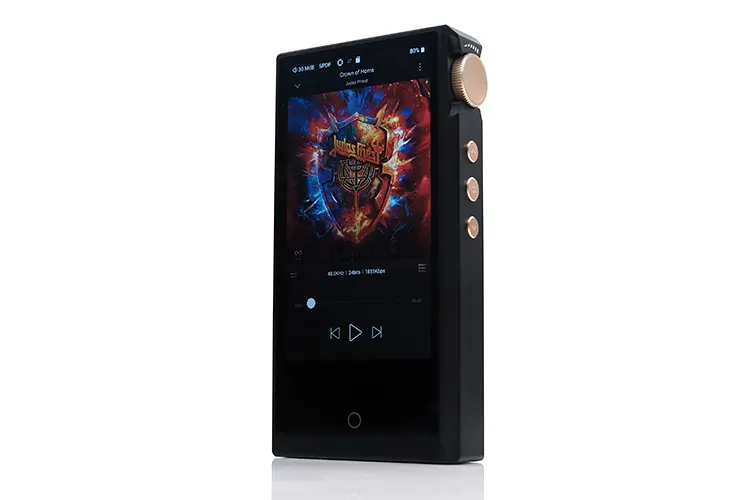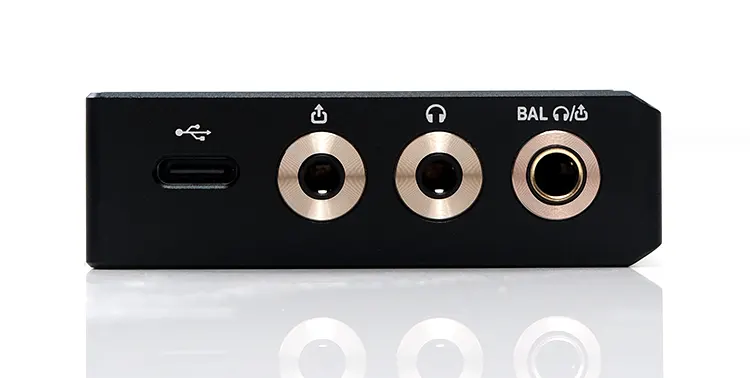Today, Marcus reviews the Cayin N3Ultra, which is a 3rd generation NOS vacuum tube-based digital audio player with a dual DAC and triple timbre mode. It is priced at $529.
Disclaimer: This sample was sent to me for my honest opinion. Headfonics is an independent website with no affiliate links. I thank Cayin for their support.
You can click here to learn more about Cayin products that we have previously featured on Headfonics.
Please note, that this article follows our current scoring guidelines which you can read here.
Think of a DAP and Cayin you think of tubes. They have been doing ‘the impossible’ for a few years now with tube-implemented digital audio players starting with the high-end N8/N8ii, and the more affordable N3Pro from 2021.
The N3Ultra is the next iteration of their pure-player series and is priced closer to the N3Pro. With a similar price point and enhanced features, it will likely prompt most users of the older version to consider a replacement.
Priced at $529 or roughly $50 more than the Pro version, the N3Ultra is perhaps the company’s most evolved and refined interpretation of a pocketable tube player to date.
It also boasts a new Android framework for its OS, three different timbre choices including 2 tube modes, and a mix of PO power levels and LO or digital I/O options to satisfy most portable audio enthusiasts.
However, there are alternatives at this price with very different selling points such as the iBasso DX180 and HiBy’s R5 Gen 2. In my full review below, you can find out how well the N3Ultra performs and which is the best choice for your needs.
Features
Summary
The Cayin N3Ultra is a NOS Vacuum tube-based ‘pure music’ portable digital audio player with up to 12 hours of continuous playback from a QC3.0-capable 4500mAh li-poly battery.
It is equipped with a customized Android 8.1 OS, uses a dual AKM4493S DAC chipset in mono mode for a fully differential output, and can deliver up to 250mW single-ended or 600mW of balanced PO output power. That should be more than enough for most IEMs, and a wide range of headphones.
You can also use it to receive a digital signal as a USB-DAC from your PC/Mac/phone or output an analog signal via a single-ended or balanced line-out to desktop or analog portable amplifiers.
The N3Ultra can decode up to PCM 32BIT/768kHZ and native DSD512 and output via LO from 1V to 2.1V SE or 2V up to 4V via balanced depending on your preference.
What we mean by pure music is that it’s not designed for a typical wireless streaming scenario unless it is connected via USB-DAC to receive a signal from a wireless audio device.
So, no WiFi or Bluetooth options are built into the N3Ultra despite its Android 8.1 framework. Consider it a heavily customized but improved OS over the original N3Pro’s HiBy OS experience that keeps the ‘pure’ aspect intact.
Tube Implementation
The N3Ultra uses the same tubes as the N3Pro, a pair of Raytheon vintage JAN6418 mini pentodes alongside an FET buffer. However, the implementation of these tubes has been given a radical overhaul compared to the older version.
The most obvious result of that upgrade is the ability to choose two distinct tube timbre modes over all of the N3Ultra’s analog outputs, both balanced and SE.
This is a feature that is not available on the N3Pro’s purely single-ended tube output nor even on the high-end N8ii for line-out. Instead, it is drawn from the recent TOTL N30 LE’s Gen3 vacuum tube circuit.
The timbre modes are called Classic and Modern. Along with a solid-state non-tube circuit output, you get the ‘holy trinity’ of timbre modes from the N3Ultra, each with a different sound signature available for both headphone output and line-out options.
Depending on how you use the N3Ultra you should also experience a lower level of microphonics or ‘tube ring’ during use.
Cayin has created a much more stable and quieter tube design by surrounding them with custom-molded shock absorbers and aligning them vertically becoming part of a stable housing framework.
Design
The dashing matte black and gold accented design language of the N3Ultra is very similar aesthetically to the N3Pro save for the slightly taller and wider form factor and a very minor 9g difference in weight.
It is still what I would call a narrow DAP, pleasingly so for single-handed use and dominated by an improved 4.1″ 720P LCD screen size and its glowing touch-capable ‘home’ ring at the base.
The N3Ultra does have some welcome changes that aid the ease of handling. Changes such as an enhanced level of chamfering around the edges of its larger LCD screen and a power switch on the top panel rather than a multifunctional volume dial.
That changed power switch position also allows Cayin to reduce the size of the volume dial’s surrounding guard. This was a more necessary protective feature to prevent accidental activation of the N3Pro’s multifunction controls
In doing so, the N3Ultra has a more uniform side panel finish providing improved access to grip the volume dial during use.
The reduced bevel size at the base of the screen combined with the new tube internal arrangements now means we have the tube ‘light show’ from two grills on the left panel consistent with the N8ii Korg Nutube positions.
As with the N3Pro, the unique N3Ultra tube ‘aura’ is assisted by an LED backlight that gives it a soft attractive orange glow behind the grills during playback.
I/O
The N3Ultra has a relatively clean set of inputs and outputs. Only the slight raise of the small gold-accented power button interrupts an otherwise flat space on the top panel with all digital and analog outputs on the base panel and the memory slot on the top of the left panel.
The base panel is a little wider than the N3Pro allowing Cayin to space the I/O a little bit more which should help users with wider barrel cables. This includes a USB-C socket, a dedicated 3.5mm LO, an SE 3.5mm PO, and a dual-function balanced 4.4mm PO/LO socket.
Cayin’s USB-C port is configured slightly differently to the standard formats with 2 additional pins activated to allow it to function smoothly for SPDIF and OTG digital audio signals.
That is not to say it is incompatible for USB-OTG with a standard cable but rather for USB-C to SPDIF conversion a Cayin version cable is more appropriate and reliable.
Like the N3Pro, there is no onboard memory inside the N3Ultra which might disappoint some potential owners since it is being marketed primarily for its local playback capability.
However, its external memory slot capacity can handle up to 1TB officially, (unofficially up to 1.5TB TF has been confirmed as working). I tend to keep my cards at 256GB maximum high speed and they worked flawlessly during my testing.
You can expand your file capacity even further with OTG flash drives and it should show up in the OS folder list as well as your media library once scanned.
Controls
There is a familiar mix of touchscreen and physical controls though with the absence of wireless connectivity there is no remote control option for portable use.
I did find the switch to a new 4.1″ IPS panel much more beneficial for navigation and media list scrolling on the N3Ultra compared to the older 3.2″ Version from the Pro unit.
It’s a more refined graphical display from the Snapdragon 425 CPU with smoother scrolling and I do welcome the more familiar, snappier navigation routes. However, some additional light might help these tired eyes a bit more.
The screen’s backlight level, even at 100%, is lower than the older N3Pro panel making the small slimmer font from the Android OS less legible from wider angles.
Aside from the screen, you have the same three playback buttons from the N3Pro on the right panel, and the multifunction on/off aspect of the volume dial is now moved to the small button on the top panel. That means the grippy dial is now volume only.
Packaging & Accessories
There are no complaints from me here on the packaging for the N3Ultra.
It has everything you need to get started right out of the box including a 1m USB-A to USB-C cable, a svelte and well-designed silicone case with plenty of ventilation, screen protectors front and back as well as the usual assortment of manuals and warranty card materials.
The black packaging box itself is about the same size as the N3Pro with a slightly bolder print and a similar dual internal display tray system to both protect and organize the accessories and the player.
As with every DAP these days, there are options for cases if the silicone version doesn’t tickle your fancy.
In this instance, I received a blue leather version priced at $29.99, similar to the older N3Pro vented green case from 2021. It is slightly bigger with a more generous opening on the base panel plus two portals on the side for the tube glow.
The design and fit are excellent, with some soft protection and a quality leather finish. The strengthened metal plating at the rear also adds some welcome durability. It also allows the N3Ultra to vent any minor warmth from the player during use.
I believe Cayin has also just released an even more luxurious $50 handcrafted purple leather case with a leather flap to reduce any potential for the unit to slide out of the top opening.
Click on page 2 below for my software impressions.
Click on page 3 below for my sound impressions and recommended pairings.

